Nine months after 110, the Land Rover Defender 90 three-door, priced around 6500 euros cheaper (on average) and an overall length shrunk to 4.58 m (including spare wheel), 44 cm less than the five-door. It is available in a five or six seat configuration (3+3).
Despite the overall modernized exterior design, it's pretty obvious that this is the Defender of the third millennium. Even those unfamiliar with the classic angular body lines will instantly notice the name embossed on the bonnet, repeated on the two front fenders, rear and door sill trims.
The front and rear vertical sections have been kept (despite detracting from aerodynamics, unlike the flat bottom of the car that favors it) and it is still possible to attach a lot of artifacts to the bodywork for your ability to reach everywhere. be better and better. This at the same time retains its ability to tow 3.5 tonnes (with trailer braked, 750 kg unlocked) with its hook at the rear.
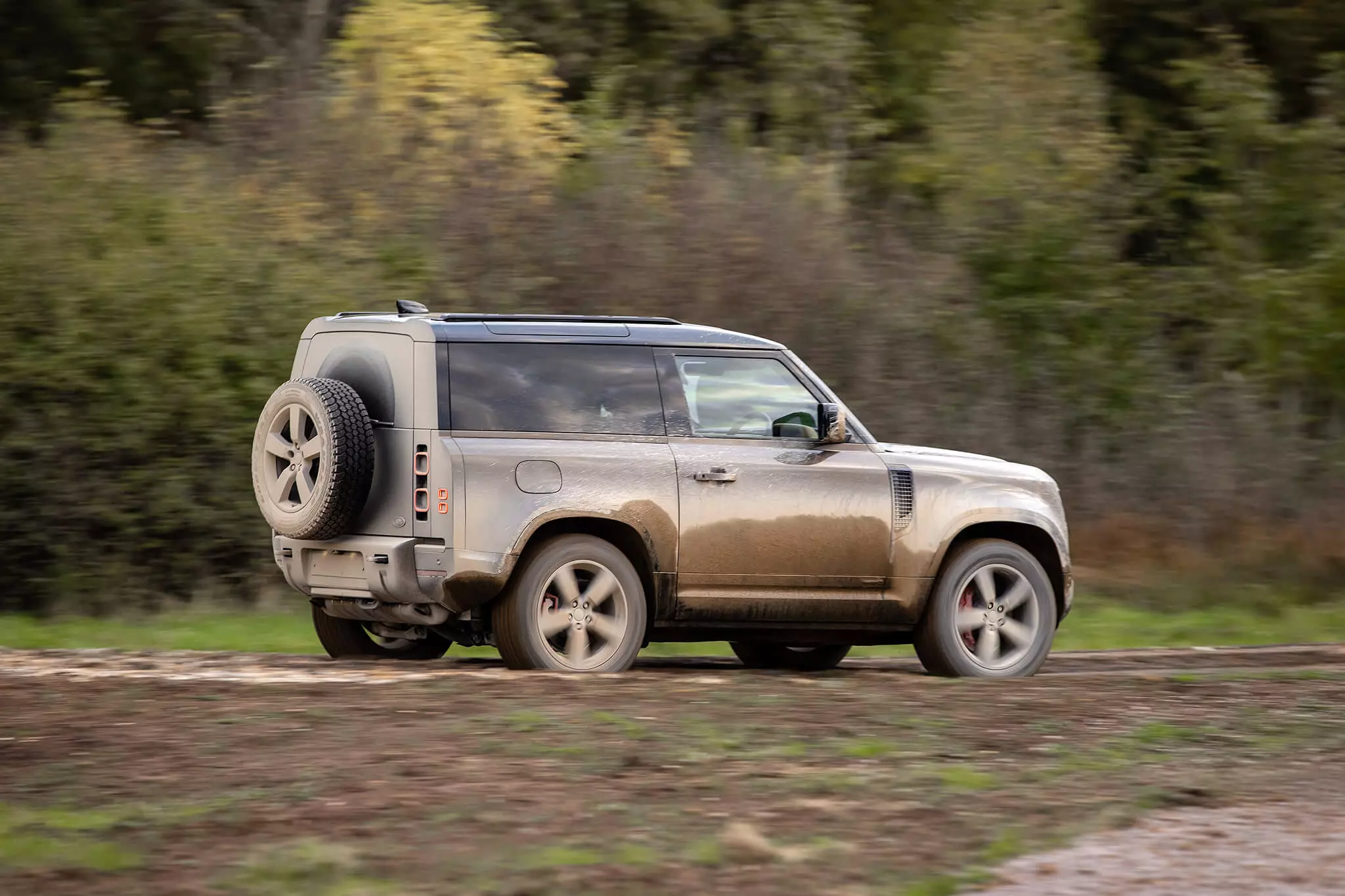
90 and 110?
The names 90 and 110 that define, respectively, the three- and five-door bodies, refer to Defender's history. The values indicated the wheelbase in inches of the original model: 90" corresponds to 2.28 m and 110" to 2.79 m. The designations remain on the new model, but with no wheelbase correspondence: the new Defender 90 is 2,587 m (102") and the Defender 110 is 3,022 m (119").
More Discovery and “less” Defender
The all-new construction and overall philosophy of the vehicle now bring it closer to Discovery, with which it shares the monocoque and body structure (largely aluminum) as well as the independent suspension and full arsenal of driver assistance systems. .
The engines, all of them coupled to the eight-speed automatic transmission and four-wheel drive, are also well known. The range starts with a 3.0 l diesel, inline six cylinders with 200 hp, and additional 250 hp and 300 hp versions (all 48 V semi-hybrids); then there is a 2.0 l petrol block, four cylinders with 300 hp (the only one without being semi-hybrid) and another 3.0 l in-line six-cylinder petrol block that produces 400 hp (48 V semi-hybrid) .
The top versions make you wait a little longer: a plug-in hybrid (P400e with 404 hp, already available on the 110) and a sportier version, with 525 hp are being finalized, taking advantage of the fact that there is enough space for the veteran 5.0 V8 block with compressor under this hood (it remains to be seen whether these two versions will be available in both the 90 and 110).
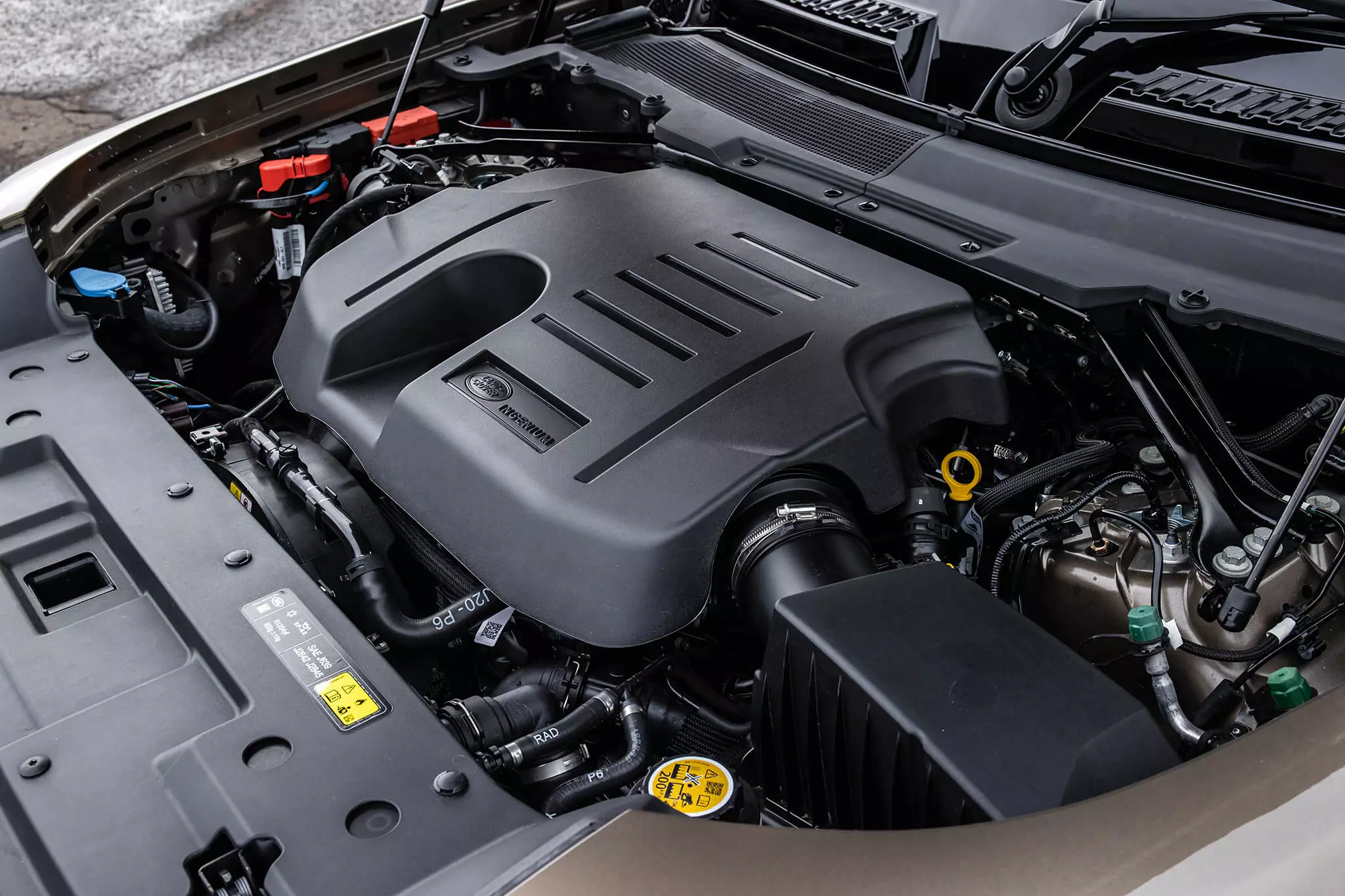
Good views of the city and countryside
Using the huge handles on the edge of the door, anyone can “hoist” themselves into this 4×4 with high ground clearance, to start enjoying the elevated riding position. The combination of high seats, low body waistline and wide glazed surface result in very good visibility to the outside.
Subscribe to our newsletter
Even the presence of a spare wheel "on the back" and large headrests or luggage stacked to the ceiling does not harm the view to the rear, because the Defender has an innovative and useful image projection captured by a high definition rear camera, mounted in an elevated position, at the touch of a button, the frameless interior mirror is no longer a conventional mirror and assumes the function of a digital screen. That greatly improves the posterior field of vision:

The rear pillars and spare wheel disappear from the field of vision, which becomes 50º wider. The 1.7 megapixel camera projects a sharp image in low light conditions and has a hydrophobic coating to maintain its performance when riding on wet, muddy floors.
Less space and less suitcase than the 110…
There's not exactly a feeling of traveling in Business Class in the second row of seats. Thanks to the “Easy Entry” seats, “boarding” is relatively easy and even a 1.85 m tall adult fits in without major restrictions.
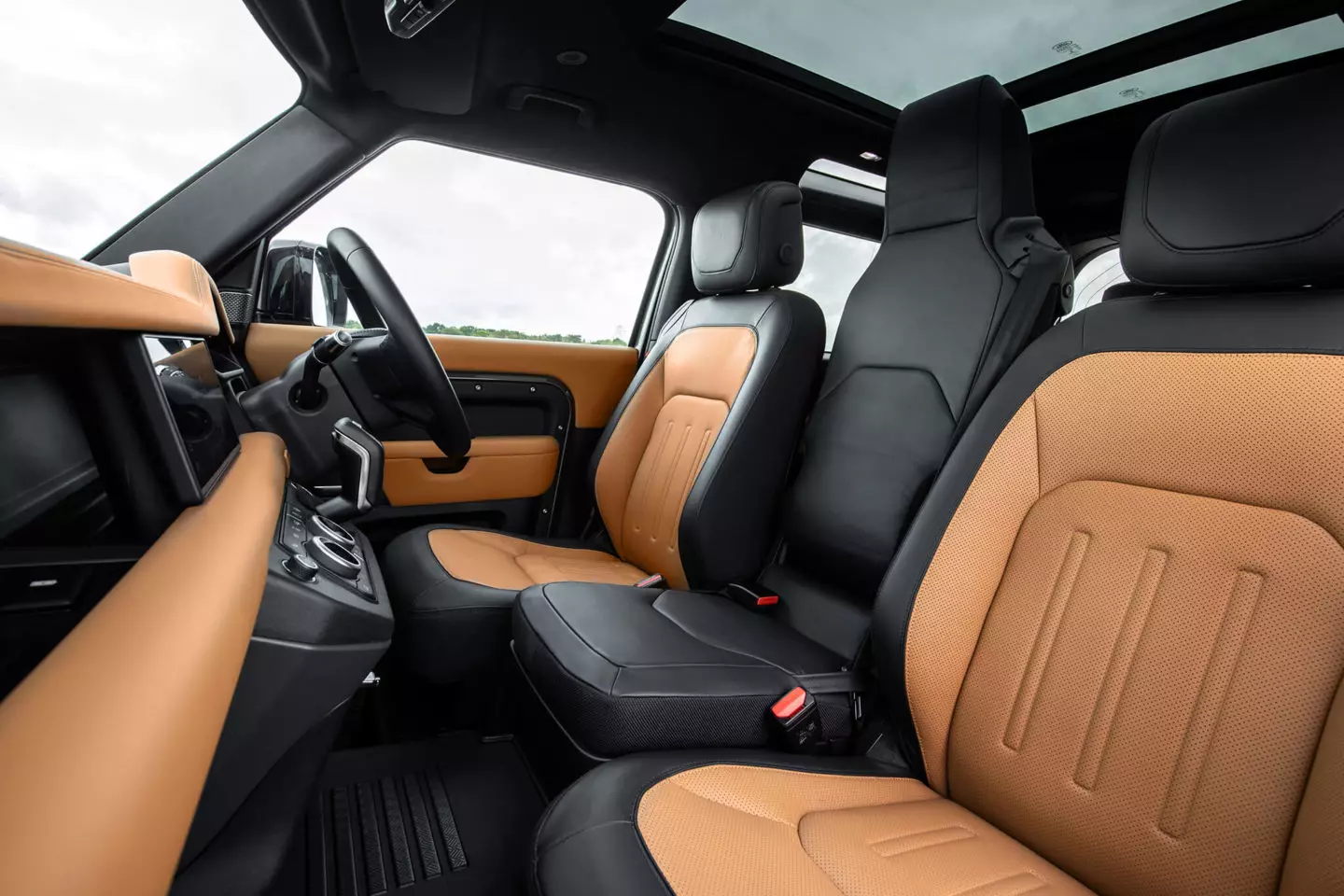
The first row offers the same generous head and shoulder space as the 110 version (as well as the center seat on the six-occupant version, suitable for a smaller person or for use on short journeys), but the second row loses 4 cm and 7 cm in these two measurements, respectively. On the floor of the cabin, and also on the trunk, there is rubber for easy cleaning.
With a load volume of 397 l (extendable up to 1563 liters with the rear seatbacks folded down), the trunk is naturally smaller than that of the Defender 110 (which expands to 231 l in a seven-seat configuration up to 916 l with five seats and 2233 l with only the front seats in use), but it's large enough for monthly grocery shopping.
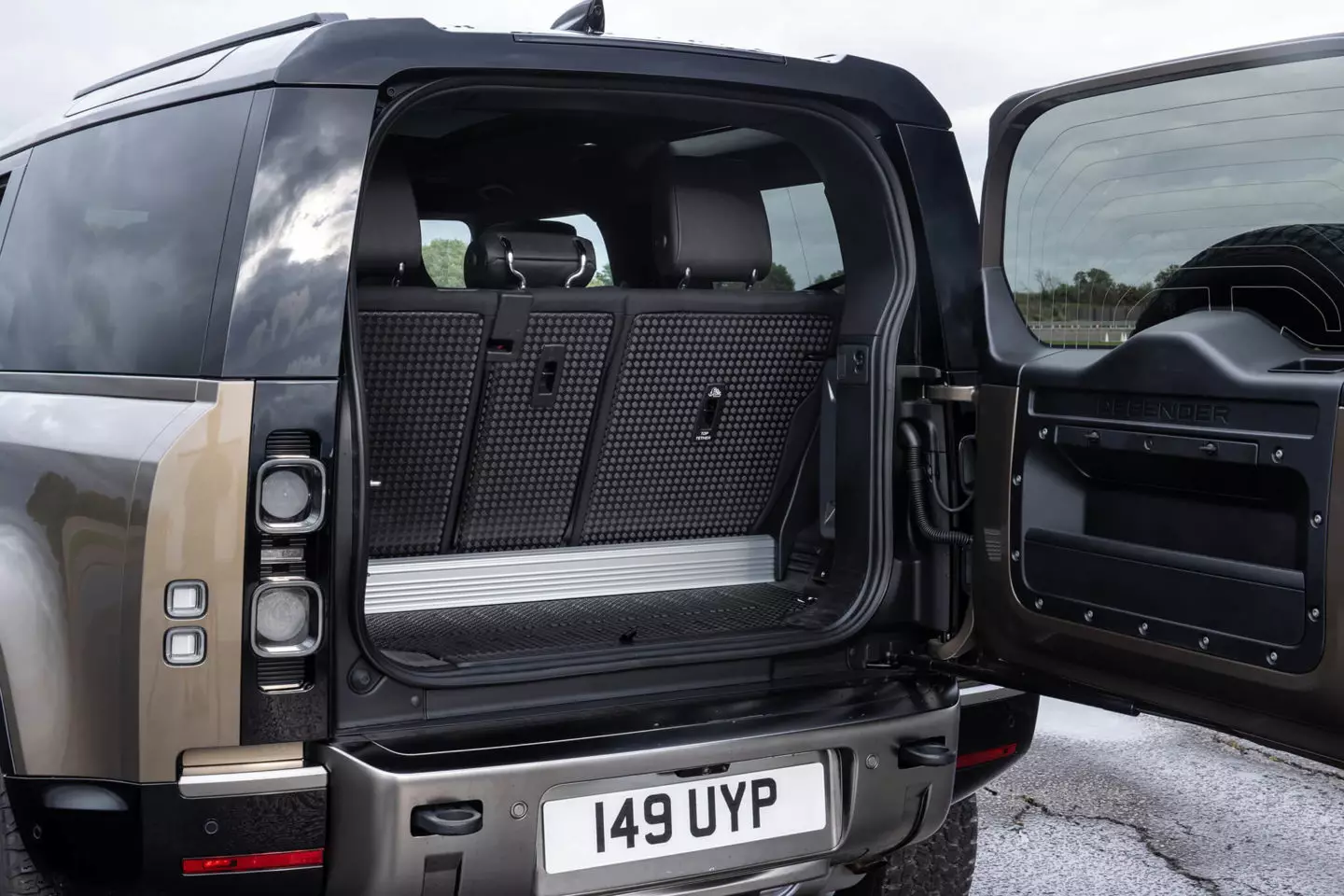
… but more agility and better performance
The Land Rover Defender 90 has the same vast electronic aids to reach "infinity and beyond", such as the depth sensor that lets you know if the Defender "will have a foot" before entering the water, even if it is able to pass through waterways up to 900 mm (850 mm with coil springs instead of pneumatics) — it makes no sense to get all wet if the depth exceeds this value.
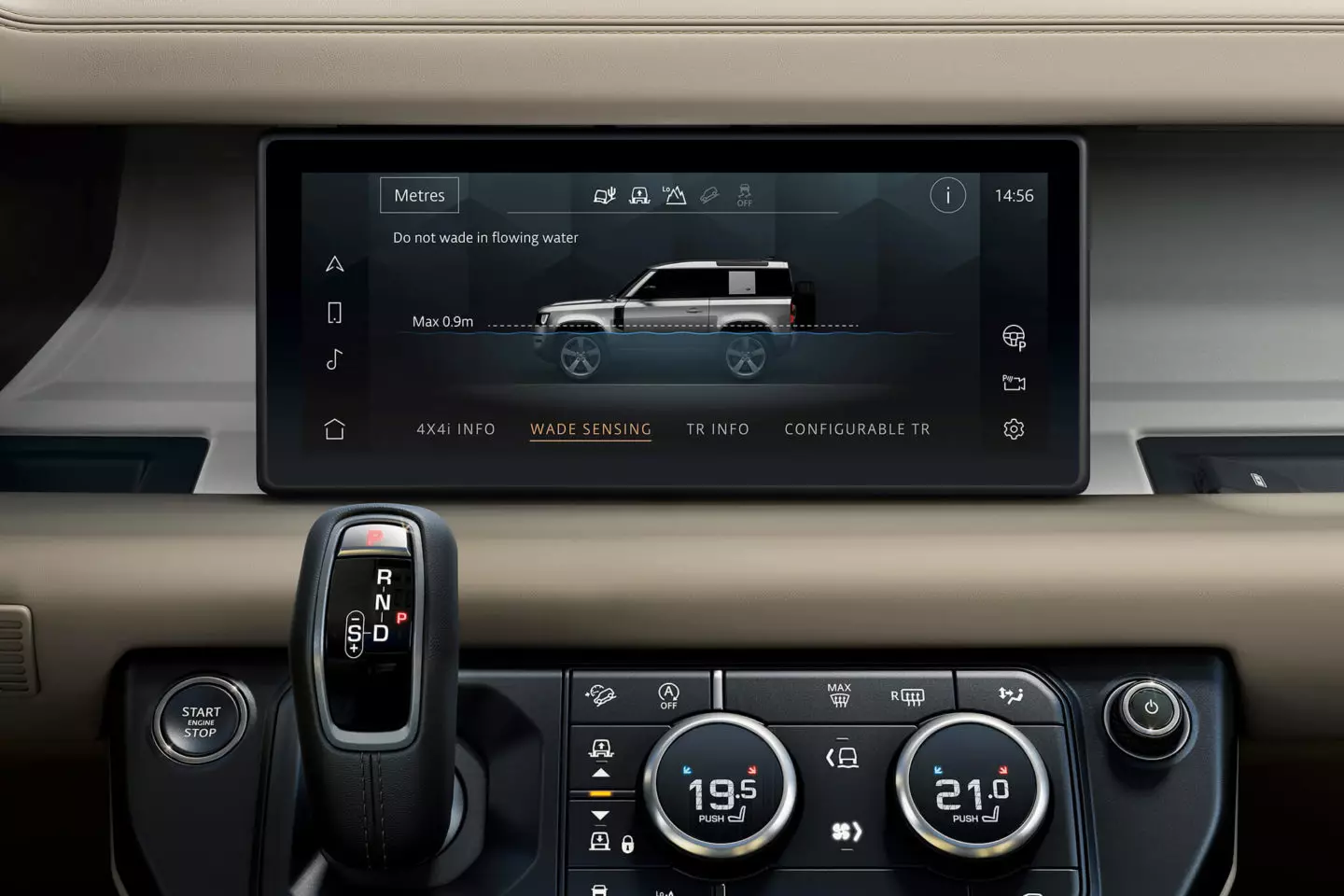
The Defender 90's compatibility with urban habitat has evolved exponentially and even though it has expanded its skills to conquer inhospitable terrain, one of the great advances is precisely to better fit into everyday life when you don't have to play Indiana Jones.
This short variant, equipped here with the 400 hp petrol engine, is equally at home both on the highway and on winding country roads, inviting you to enjoy competent driving and enjoy the chassis that is more dynamic in this three-door version, while maintaining an important reserve of comfort — the top-of-the-range X version uses electronic shock absorbers and pneumatic springs. Notwithstanding, unlike modern SUVs, it is felt that there is clearly a more obvious tendency for the bodywork to adorn curves and roundabouts (we are in a tall 4×4 and “square”, “old-fashioned”).
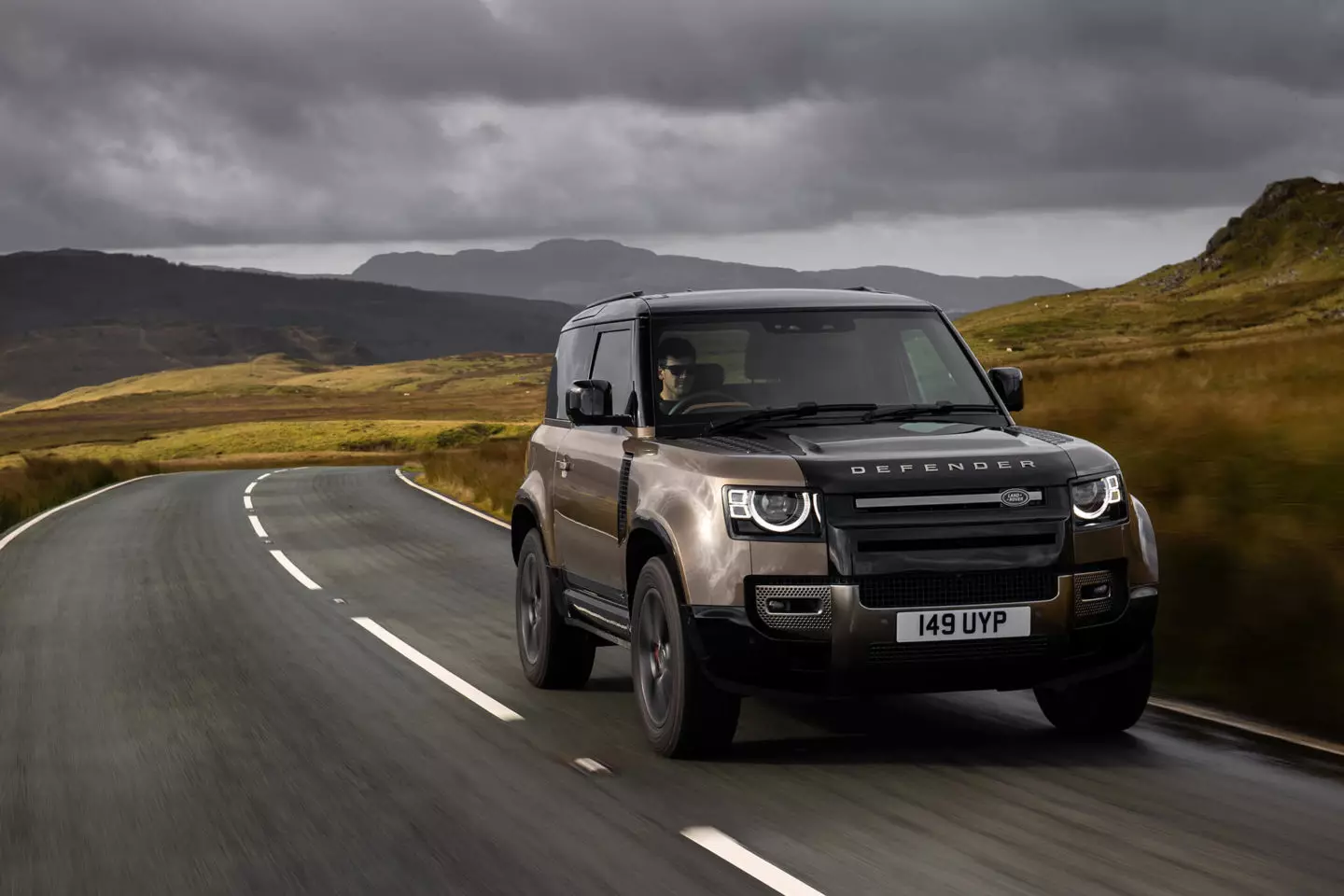
Land Rover Defender, World Design of the Year 2021.
The lower weight (116 kg lighter), shorter bodywork and shorter wheelbase (turning diameter is reduced by 1.5 m) also contribute to the superior overall agility compared to the 110. In terms of speed, it feels ready to challenge any compact GTI (the 550 Nm on the right foot 2000 to 5000 rpm are useful), as seen by the 0-100 km/h sprint in just 6.0s or by peak speed of 209 km/h.
The ZF eight-speed automatic transmission makes good use of the moderate electrical impulse in intermediate accelerations, while at the same time being able to respond to provide a (more) sporty drive when we place the selector in the S position and its smoothness is appreciated in more delicate situations in all terrain.

The “singing” of the six-cylinder engine feels like low-frequency background music, without being too intrusive in the cabin, whose soundproofing has nothing to do with that of its predecessor. The brakes require some getting used to by the regenerative braking system — which means that the early part of the pedal's stroke has less intervention than expected — but they deliver later in terms of power and resistance to fatigue.
Regarding consumption, it is more reasonable to have averages in the order of 15 l/100 (above the advertised 12.0), even without great “debauchery” at the wheel.
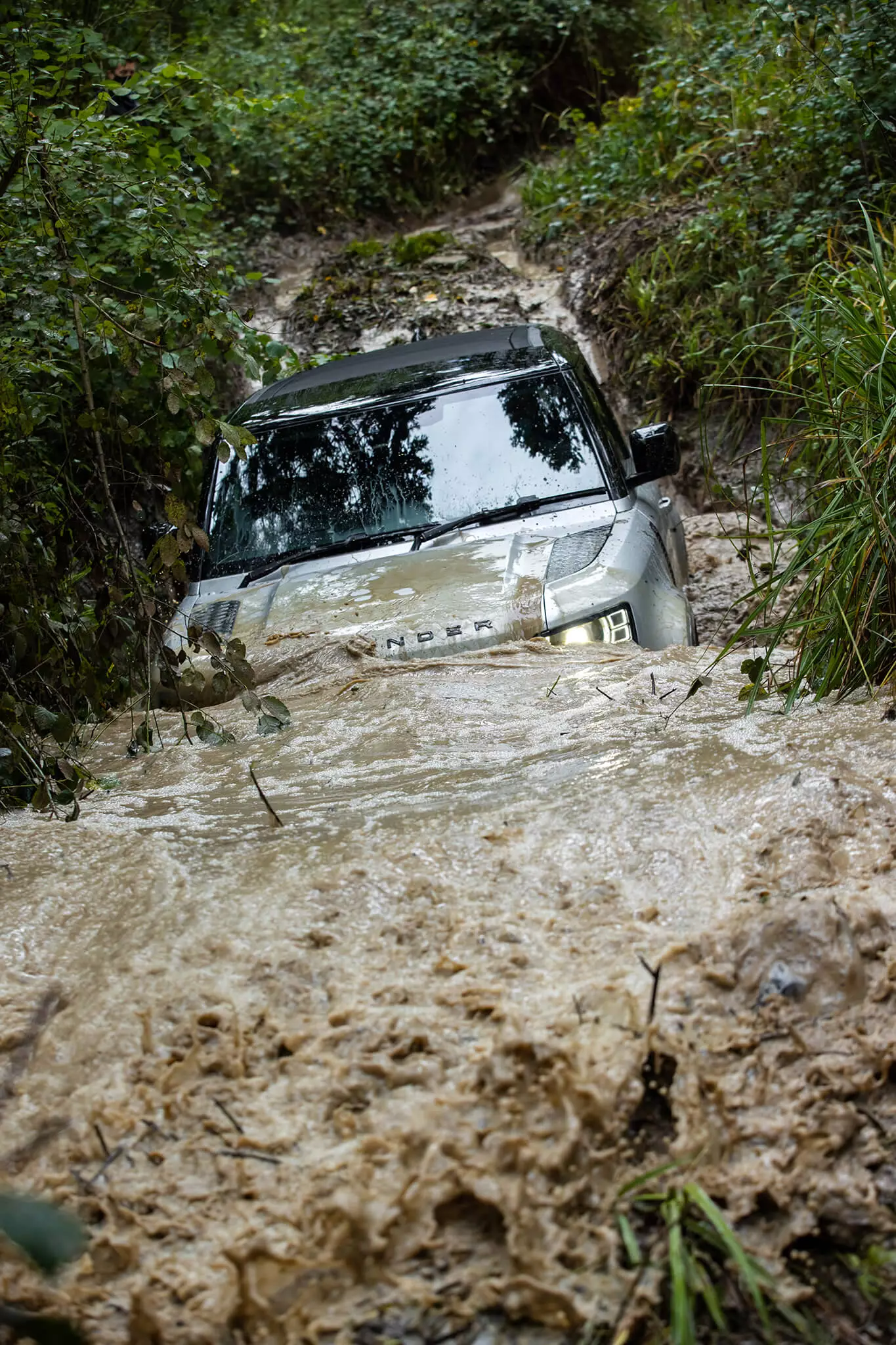
Technical specifications
| Land Rover Defender 90 P400 AWD Auto MHEV | |
|---|---|
| Motor | |
| Position | longitudinal front |
| Architecture | 6 cylinders in V |
| Capacity | 2996 cm3 |
| Distribution | 2 ac.c.c.; 4 valve per cylinder (24 valve) |
| Food | Injury Direct, Turbo, Compressor, Intercooler |
| Compression ratio | 10.5:1 |
| power | 400 hp between 5500-6500 rpm |
| Binary | 550 Nm between 2000-5000 rpm |
| Streaming | |
| Traction | on four wheels |
| Gear box | Eight-speed automatic (torque converter) |
| Chassis | |
| Suspension | FR: Independent, overlapping double wishbones, pneumatics; TR: Independent, multi-arm, pneumatic |
| brakes | FR: Ventilated discs; TR: Ventilated Discs |
| Direction | electrical assistance |
| turning diameter | 11.3 m |
| Dimensions and Capabilities | |
| Comp. x Width x Alt. | 4583 mm (4323 mm without 5th wheel) x 1996 mm x 1969 mm |
| Length between the axis | 2587 mm |
| suitcase capacity | 397-1563 l |
| storage capacity | 90 l |
| Wheels | 255/60 R20 |
| Weight | 2245 kg (EU) |
| Provisions and consumption | |
| Maximum speed | 191 km/h; 209 km/h with optional 22″ wheels |
| 0-100 km/h | 6.0s |
| Combined consumption | 11.3 l/100 km |
| CO2 emissions | 256 g/km |
| 4×4 Skills | |
| Attack/Output/Ventral Angles | 30.1º/37.6º/24.2º; Max.: 37.5º/37.9º/31º |
| ford ability | 900 mm |
| height to ground | 216 mm; Max.: 291 mm |
Authors: Joaquim Oliveira/Press-Inform
